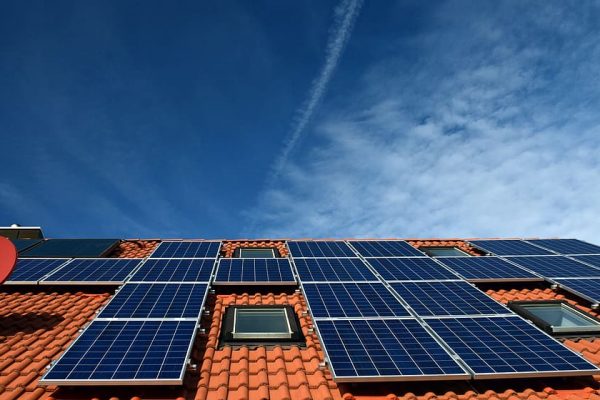Project Report For Solar Photovoltaic Power Plant
Introduction
Project report for Solar photovoltaic Power Plant is as follows.
The solar photovoltaic (PV) effect refers to the process of converting light (photons) to electricity (voltage). Photovoltaic solar cells directly turn sunlight into solar power (electricity). They employ thin layers of semiconducting material that vary in charge between the top and bottom layers. The semiconducting substance can be sandwiched between a glass sheet and/or a polymer resin.
If exposed to sunlight, electrons in the semiconducting material absorb photons and become highly excited. These move back and forth between the top and bottom surfaces of the semiconducting substance.
This electron movement produces a current known as direct current (DC). This electricity is then sent via an inverter, which transforms it to alternating current (AC) for usage in your house. Different solar PV setups need somewhat different components.
However, in the following two parts, we have detailed all of the major components that will comprise your solar PV array and give you 100% renewable, free power. The solar panel is the central component of any solar photovoltaic system, converting the sun’s energy into an electrical current.

Types Of Solar Photovoltic Power Plant
Monocrystalline solar cells: This form of solar cell is constructed from thin silicon wafers cut from artificially manufactured crystals. Because they are formed from single crystals grown in isolation, these cells are the most expensive of the three (approximately 35% more expensive than comparable polycrystalline cells), but they have the highest efficiency rating – between 15 and 24 percent.
Polycrystalline solar cells: Such a type of solar cell is likewise created from thin wafers of silicon cut from artificially grown crystals, but instead of single crystals, these cells are constructed from several interlocking silicon crystals grown together. This makes them less expensive to manufacture, but their efficiency is lower than that of monocrystalline solar cells, which is now 13-18%.
Amorphous solar cells: These are the cheapest solar cells to manufacture, are relatively new to the market, and are manufactured quite differently than the other two varieties. Instead of utilising crystals, silicon is thinly placed on a backing substrate. The amorphous solar cell has two significant advantages: first, the silicon layer is so thin that the solar cells are flexible, and second, they are more efficient at low light levels (such as during the winter).
Hybrid solar cells: It is a hybrid of amorphous and monocrystalline solar cells. These have higher efficiency ratings than the combined total of the other three types of solar cells and are referred to as HIT solar cells (Heterojunction with Intrinsic Thin Layer, a mouthful!). Furthermore, they perform better in hotter climates, where temperatures frequently surpass 250 degrees Celsius, producing up to 10% more power. We believe that polycrystalline cells are the best solution in many circumstances since they offer good value while being reasonably efficient.
Market Potential Of Solar Photovoltaic Power Plant
The market for solar photovoltaic (PV) systems was valued at USD 159.84 billion in 2021 and is anticipated to reach USD 250.63 billion by 2030, growing at a CAGR of 5.1% from 2022 to 2030.
Lower solar energy prices, along with more financial assistance, will enable the solar photovoltaic (PV) business to thrive. Product acceptability will be assisted by increasing industrial potential, as well as wide resource availability and cost-effectiveness. To boost product acceptance, various regulatory measures such as asset and financial leveraging, subsidies, and other financial tools will be utilised.
Also, throughout the projection period, the expansion of the solar photovoltaic (PV) market will be fueled by the accomplishment of various solar photovoltaic (PV) installation goals as well as a shift in emphasis towards the reduction of carbon emissions.
Solar photovoltaic (PV) demand will expand as a result of recent technological advancements and R&D operations for efficient power generation across large scale solar applications. A large growth in solar deployment rates, as well as favourable government renewable energy targets, will drive the market for crystalline solar photovoltaic (PV).
A drastic change towards lucrative new product development, manufacturing accuracy, optimisation, and standardised product techniques for power output, fewer emissions, and low installation costs will further alter the business landscape.
Project Report Sample On Solar Photovoltaic Power Plant
Need Help?
Create 100% Bankable Project Report

